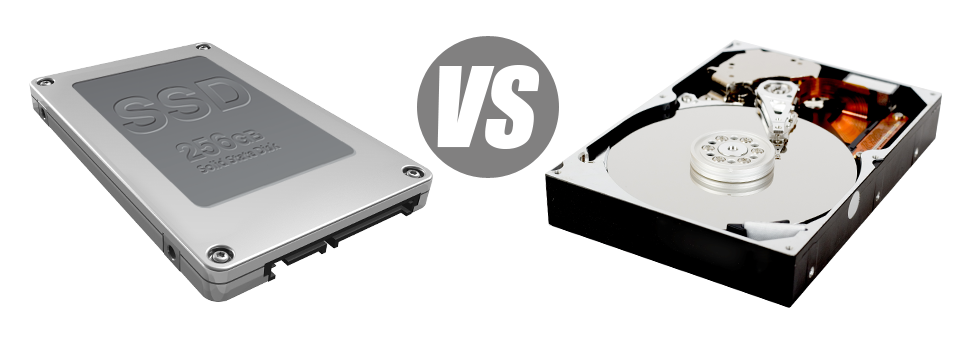For many years there was only 1 efficient way for you to store data on your computer – utilizing a hard disk drive (HDD). Nonetheless, this sort of technology is presently showing its age – hard disks are really noisy and slow; they’re power–ravenous and are likely to produce a great deal of warmth for the duration of intense procedures.
SSD drives, however, are really fast, take in a lot less power and tend to be far less hot. They feature an innovative method to file access and data storage and are years in front of HDDs regarding file read/write speed, I/O performance as well as energy efficacy. Figure out how HDDs fare up against the modern SSD drives.
1. Access Time
After the release of SSD drives, file access rates are now tremendous. Thanks to the new electronic interfaces made use of in SSD drives, the normal data access time has shrunk towards a all–time low of 0.1millisecond.
The concept driving HDD drives goes all the way to 1954. And while it’s been considerably processed progressively, it’s even now no match for the ingenious technology behind SSD drives. Through today’s HDD drives, the very best data access rate it is possible to achieve may differ somewhere between 5 and 8 milliseconds.
2. Random I/O Performance
The random I/O performance is critical for the functionality of any file storage device. We’ve conducted in depth testing and have established an SSD can deal with no less than 6000 IO’s per second.
Over the very same tests, the HDD drives turned out to be considerably slower, with simply 400 IO operations managed per second. Although this may appear to be a significant number, if you have a busy server that hosts a great deal of well–liked web sites, a slow disk drive may lead to slow–loading sites.
3. Reliability
SSD drives are made to include as less moving elements as possible. They utilize an identical concept to the one found in flash drives and are also significantly more dependable compared with standard HDD drives.
SSDs have an typical failing rate of 0.5%.
With an HDD drive to work, it has to rotate a couple of metallic hard disks at more than 7200 rpm, keeping them magnetically stabilized in mid–air. There is a lot of moving elements, motors, magnets and other devices packed in a small location. Consequently it’s no surprise the standard rate of failure associated with an HDD drive varies among 2% and 5%.
4. Energy Conservation
SSD drives function nearly soundlessly; they don’t make extra heat; they don’t involve additional cooling down solutions and use up significantly less electricity.
Lab tests have established that the typical electrical power utilization of an SSD drive is amongst 2 and 5 watts.
From the minute they were developed, HDDs have always been really energy–greedy products. And when you have a web server with many types of HDD drives, this will raise the per month power bill.
Normally, HDDs use up in between 6 and 15 watts.
5. CPU Power
The faster the data file accessibility speed is, the faster the data file queries can be delt with. It means that the CPU do not need to hold resources waiting around for the SSD to answer back.
The common I/O wait for SSD drives is actually 1%.
HDD drives permit sluggish access speeds compared to SSDs do, which will result for the CPU needing to hang around, whilst scheduling allocations for your HDD to find and give back the inquired file.
The common I/O wait for HDD drives is just about 7%.
6.Input/Output Request Times
It is time for some real–world cases. We ran a detailed system backup with a web server only using SSDs for file storage purposes. During that procedure, the common service time for an I/O demand remained under 20 ms.
All through the identical lab tests using the same server, this time around installed out utilizing HDDs, performance was substantially reduced. During the hosting server back up process, the normal service time for I/O requests fluctuated somewhere between 400 and 500 ms.
7. Backup Rates
You can easily notice the real–world potential benefits to using SSD drives daily. For instance, with a hosting server furnished with SSD drives, a complete back–up can take only 6 hours.
We made use of HDDs exclusively for a few years and we’ve excellent familiarity with how an HDD runs. Creating a backup for a web server equipped with HDD drives will take around 20 to 24 hours.
The VPS hosting plans along with the standard cloud web hosting plans accounts offer SSD drives by default. Be part of our Sun Spring Hosting family, and see the way we can help you improve your web site.
Hepsia
- Live Demo
Service guarantees
- Each of our Virtual Private Servers is put together for you at no extra cost. 99.9% network uptime. Full root access to the server.
Compare our prices
- Conveniently review the parameters and capabilities supplied by all of our Virtual Private Servers. Find out exactly which VPS Hosting configuration provides you with precisely what you’ll need to deal with your dynamic online presence easily.
- Compare our hosting plans
Contact Us
- We’re available for you round the clock to reply to any queries with regards to our VPS Hosting solutions. 60–min reply–back time warranty.















